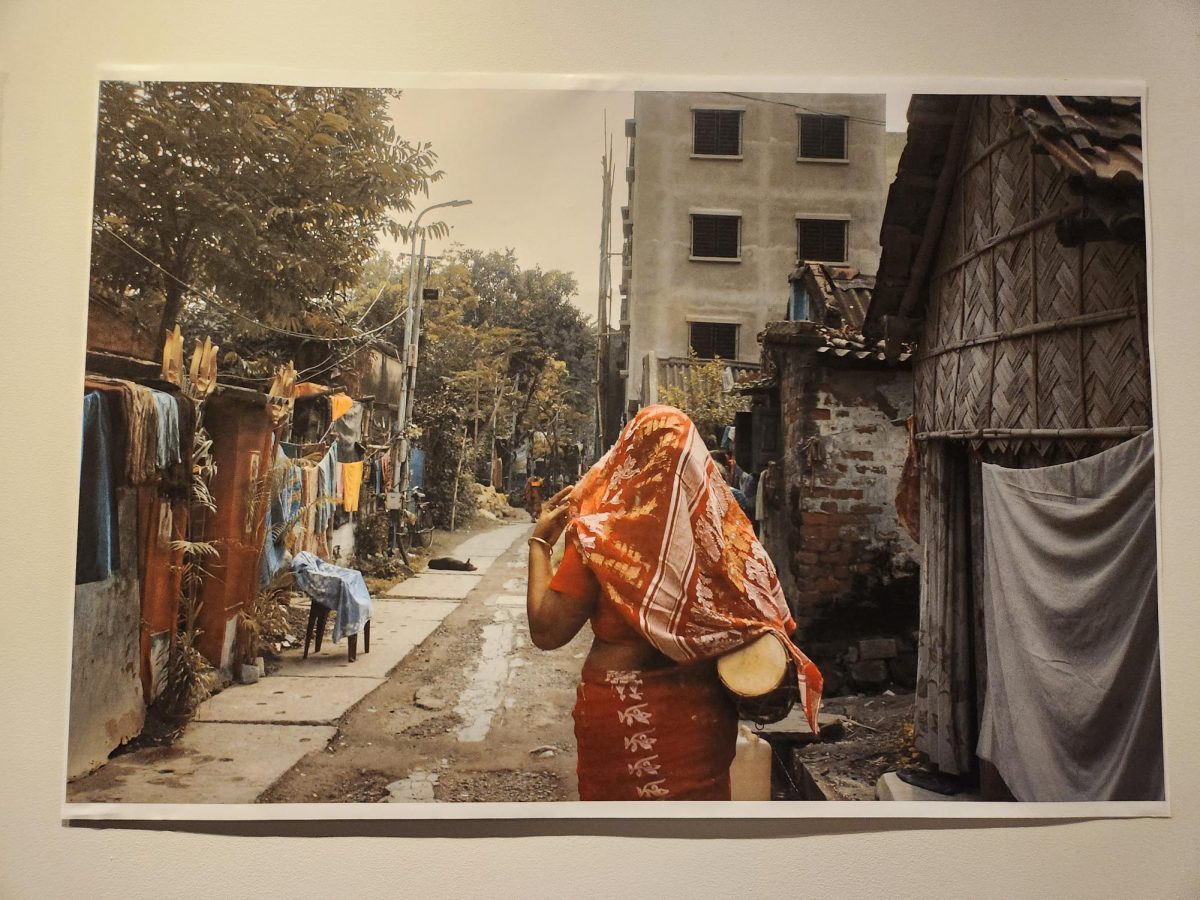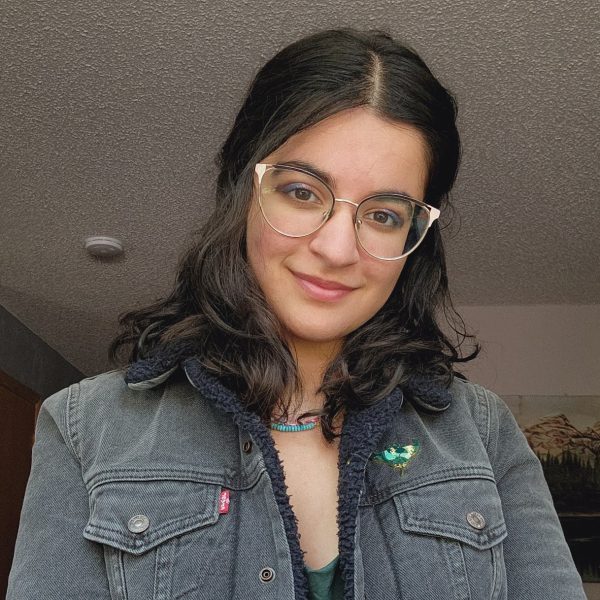On Friday, Apr. 5, the Hamlin Creative Space in the Weitz Center hosted a reception for a photo exhibit called “Women of Joy: Inside Kolkata’s Trans Communities.”
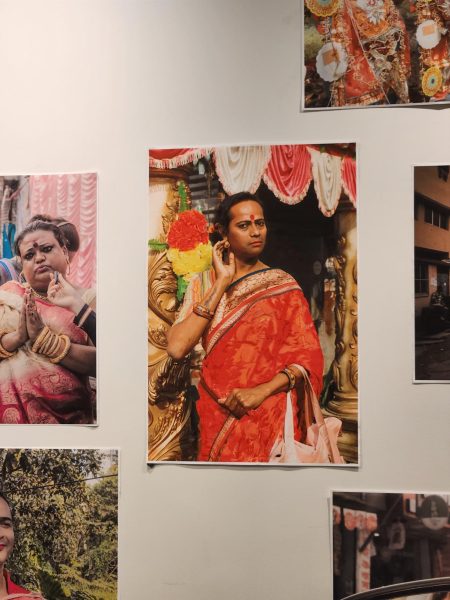
The exhibit was created by Annanya Sinha ’25, a psychology and gender, women’s and sexuality studies (GWSS) double major, and features stills of a transgender community in Kolkata, India. The photos are part of a larger work, and will be part of Sinha’s GWSS comps next year. Their project is a short documentary called “Beyond Hijra” that discusses transgender people in India.
The reception opened at 5:00 p.m. on Friday and closed at 6:00 p.m., though the exhibit remains open until April 13 . In the small space, dozens of large prints were hung from the walls, featuring people dressed in vibrant oranges, pinks and reds. The brightness of their clothing stood out as central to the exhibit’s focus, and contrasted both with the dim lighting of the Creative Space, as well as the atmosphere of the photos themselves.
The visitors on Friday commented on this aspect of the exhibits, with one visitor saying that they “like how there’s a contrast between the people and the infrastructure.” Kelly Hsu ’27 also appreciated this about the photos, saying that she thought that they were “very distinguished and pretty.”
Alejandro Gonzalez ’24 said that the content of the exhibition was “really new to me.” Gonzalez added, “I love learning things” such as the fact that there are “transgender gods in the Hindu religion.” Along with the same notes that other visitors appreciated, he came away from the exhibit with the thought that “Life is better when it’s colorful; that’s something I see here.”
Sinha was pleased with the outcome of the reception, noting their excitement for “sharing my work with my community.” One aspect they really wanted to emphasize about the exhibit was that “I deliberately left the photographs untitled.” This leaves the photos open to interpretation, “so people would have the chance to wonder at the art without making any assumptions.” She added that “of course I love when they ask me questions!”
The artwork from Sinha’s exhibit will soon be available on a website with space for people to leave comments, questions and critiques.
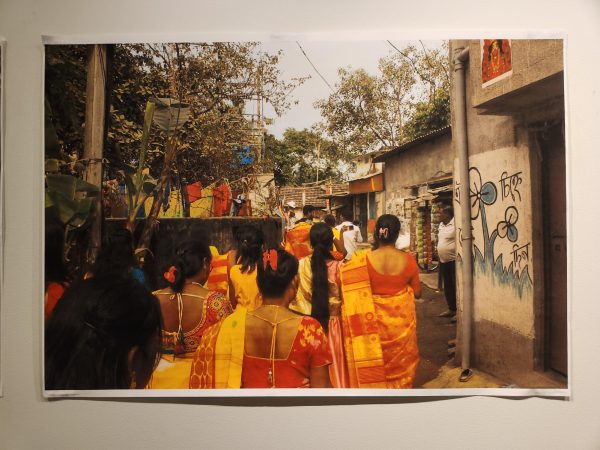
On her inspiration for the subject of their comps and the exhibit, Sinha said, “If one looks at the socio-political situation in South Asian countries, they’d notice that it’s becoming increasingly conservative.”
“I’ve advocated for LGBTQ+ rights in South-Asia, particularly in the field of healthcare, for six years now,” said Sinha. “And, I’ve heard versions of this ubiquitous phrase: ‘LGBTQ+ is all Western nonsense. It’s not a part of our culture’ touted by politicians, and by common folk alike.”
Sinha’s work comments on colonialism in India, but also the ways it implicitly remains present in society. “People love hating the West,” they said. “But really, if you think about it, you’ll realize that attributing queerness as a product of the West is simply doing us a disservice. The Indian subcontinent has rich and extensive accounts of trans people existing, and thriving in history! Particularly trans women who have been a part of Mughal courts, or on faces of Hindu temples! In fact, we even have trans gods!”
At the reception, Sinha emphasized the ways that her photos are truly grounded in India, saying that “queerness isn’t a Western import.”
“I sought to unravel how we’ve buried our pride,” they said. “Religion and god-worshiping is a powerful motivator in India so I made sure to photograph and engage with ‘trans gods.’” Along with photographs of the people themselves, “In my exhibition you’ll see the inside of a temple with highly decorated statues of gods, one of them is Ardhanarishvara — an androgynous composite of Shiva and his wife, Parvati — who I interpret as a trans god.”
Sinha added that “Contextually, this Hindu temple is owned and operated solely by trans women. People usually pay 2,000-5,000dollars to enter and be blessed by the head priestess! So, this wasn’t a common temple at all!”
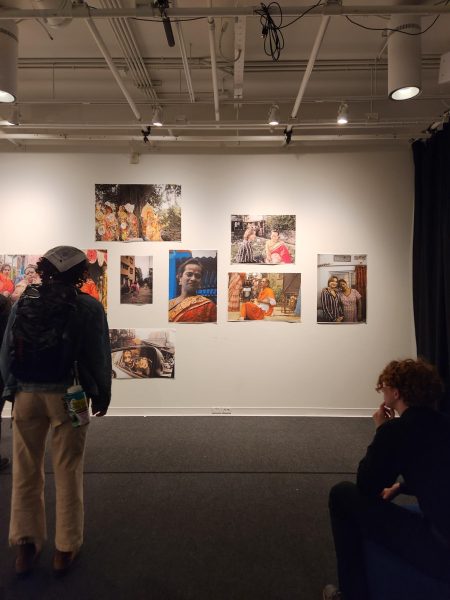
In Kolkata, according to Sinha, it is one of the few communities that practice religious syncretism between Islam and Hinduism. Sinha explained that “I’m not quick to blame the ‘big bad West’ but I do think colonization and its long-lasting effects have done us all harm, especially in the trans community.”
Emphasizing this point, they mentioned that “It was only recently that some of the hardest anti-trans, colonial-era laws were repealed in India — a couple hundred years later!” They commented on this shift in India, “from a land that respects and even worships cultural, religious and bodily diversity to one that criminalizes it.”
Reflecting on their work so far, Sinha said, “I think my research, my film and my photography exhibition is a nice response to all those who reduce the LGBTQ+ culture in the global South.” They re-emphasize that “LGBTQ+ people are not a Western import. Homophobia is.”
“There’s caveats to that statement of course,” said Sinha. “But I seek to explore queer identity grounded in a land’s history, religion and long-standing (and evolving) culture!”












